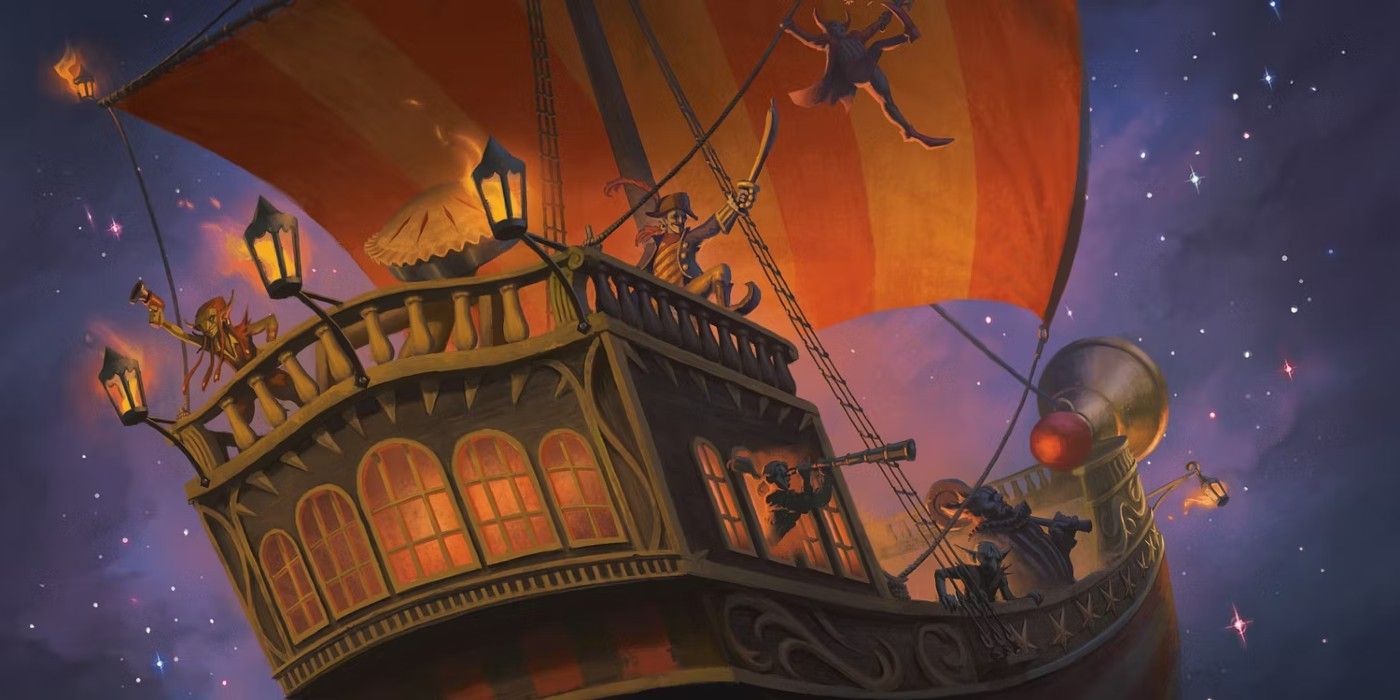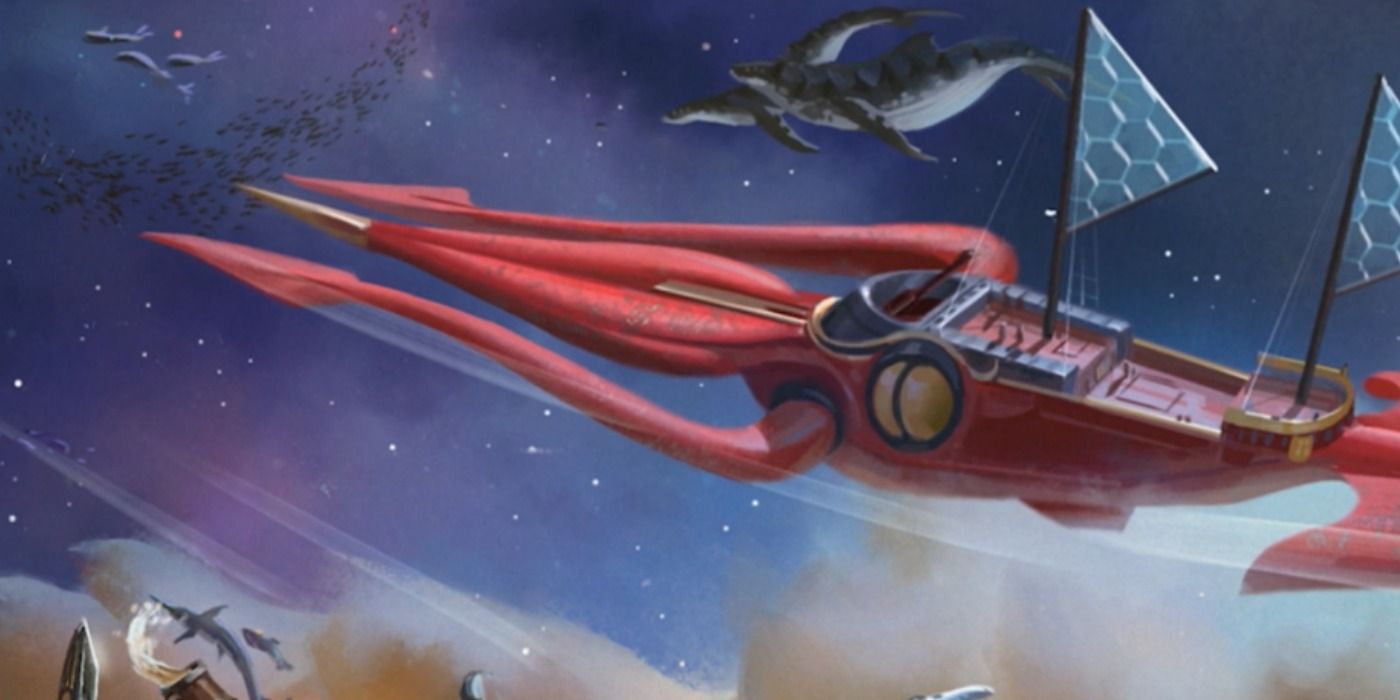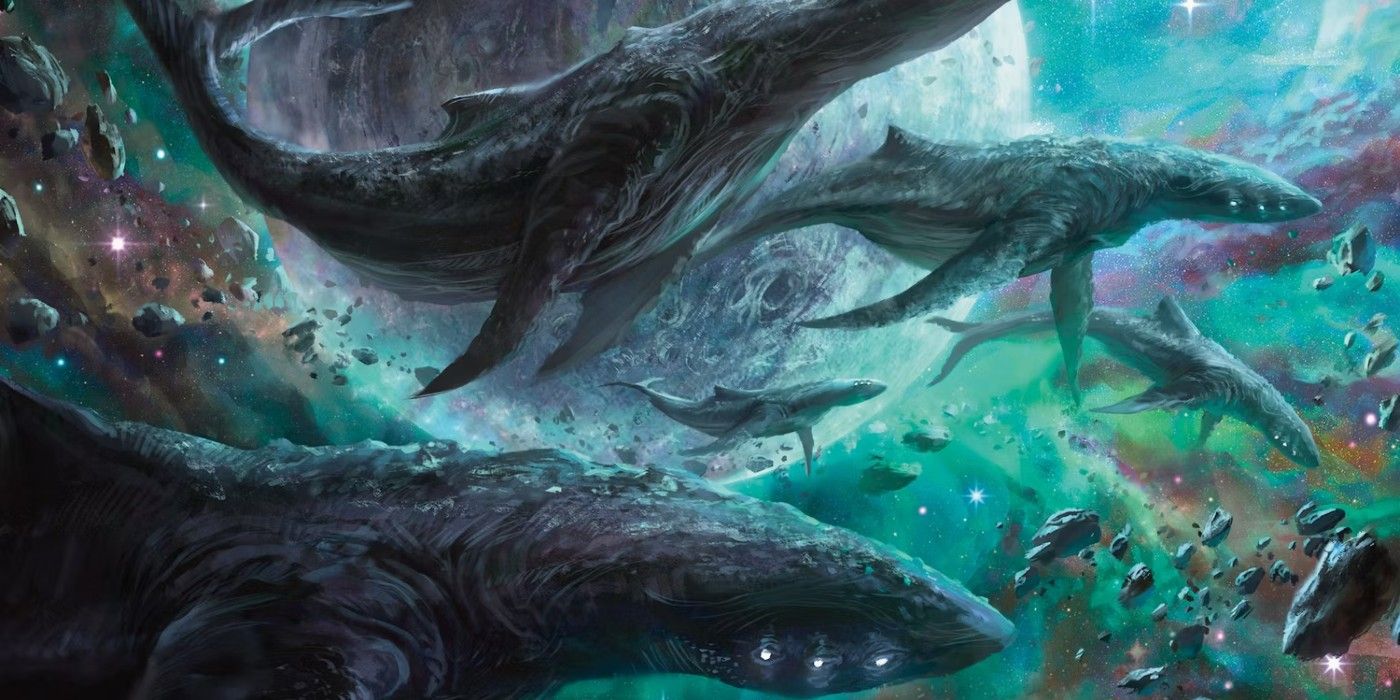The upcoming Spelljammer campaign setting for Dungeons & Dragons will let players sail the stars behind the helm of a magical ship. This means that Spelljammer is the perfect fit for a D&D campaign inspired by One Piece, the incredibly popular pirate manga series. It's possible to make a character-driven D&D One Piece campaign using the existing settings or a homebrew world, but Spelljammer is a much better fit, as the strangeness of the One Piece world fits better in an intergalactic setting than a standard D&D fantasy world.
The average D&D campaign takes place on dry land, with the occasional sea journey thrown in, just so the players can get attacked by lizardfolk, kuo-toa, or sahuagin on the way. There have been some D&D campaigns involving ships, with the most recent being the Ghosts of Saltmarsh adventure anthology, but they don't appear as often as land campaigns. This might be because D&D is a world with flying mounts and teleportation spells, so lengthy and dangerous sea vessels might not be as important in a fantasy world as they were in the history of the real world.
The upcoming Spelljammer: Adventures in Space set will give groups the rules for a campaign set in the outer space regions of the D&D multiverse. It's here that a One Piece-inspired campaign would work best, as the issues that come up when introducing D&D elements to nautical campaigns aren't as prominent in Spelljammer. The players can form their own group of Straw Hat Pirates and go on adventures among the stars in Spelljammer.
A Treasure Hunt Is An Ideal Fit For Spelljammer
Spelljammer takes nautical adventures to the stars. with many spelljammer ships being able to function as naval vessels. The campaign is intended to offer the ultimate freedom to players, as they can up anchor and head into space whenever they choose. This does present some difficulties when designing a homebrew campaign, however, as the limitations that prevent players from going off the rails in a regular campaign no longer exist. The players have ultimate freedom, but this is D&D, not Grand Theft Auto, and the D&D DM still must keep parties on track for their story.
The overarching story in One Piece is that of a treasure hunt, with pirates all over the world searching for the One Piece. Over the course of the story, it has been revealed that the location of the One Piece is hidden in code written on four Poneglyphs, which are indestructible stone slabs created in a long forgotten era. The current goal of the protagonists in the anime is to find and copy the information on the Poneglyphs, so they can work out the route to the final island, where One Piece is said to lay.
A treasure hunt in the style of One Piece is the perfect fit for a Spelljammer campaign. The endless scope of wildspace means that there are countless opportunities for there to be lost buried treasure, which cannot be found with the aid of D&D's Divination school of magic and its spells. The treasure could be anything from a trove of powerful magic items left by some extinct civilization, a mountain of gold and gems left by a pirate who met his end while exploring a new region of space, or even the mythical original Spelljammer ship itself, which the campaign setting is named after. All it takes is for the players to acquire the piece of a map and to be given hints on the location of the other pieces, and that creates the framework for the campaign.
The Party Becomes The Crew Of The Spelljammer (With Roles To Match)
One recurring theme throughout the early arcs of One Piece was that each new character who joined the main cast had a specific role as a crew member on the ship. This approach slowed down over time, as the main roles were filled and new characters joined less frequently, but it still happens from time to time, such as Jinbei becoming the helmsman when he finally joined the crew. In D&D, each character has a specific race and class, but they can also contribute to the group by taking on a specific role in the crew.
The Spelljammer Academy prequel adventure has revealed that there are at least two specific roles: Captain and Spelljammer. It's the Captain's role to command crewmates, which could give them the ability to command NPCs to perform specific actions in battle, such as manning the weapons, repairing damage to the spelljammer, or treating the wounded. It's the role of the Spelljammer to man the Spelljamming Helm, which controls the movement of the ship. The full ruleset in Spelljammer: Adventures in Space might be more complex, but even if it isn't, the DM can easily create specific rules for filling the roles each ship. The players can fill some of them on their own (with the Captain and Spelljammer being necessities), but the empty roles will give the player an incentive to seek out NPC allies to join the crew. The roles can include a First Mate (command defers to them if the Captain is incapacitated, giving them the power to command NPC crewmates). Engineer (the spelljammer gradually restores lost hit points over time), Doctor (the crew heals and recovers from status effects at a faster rate), Navigator (the ship is less likely to have a bad random encounter), Cook (rations deplete at a slower rate), and Master Gunner (ship weaponry is more accurate/requires fewer actions to use), to name but a few.
Using Wildspace As The Grand Line
D&D has many strange campaign settings, like Planescape, but few are as bizarre as the Grand Line from One Piece. The bulk of the series takes place in a strange sea route called the Grand Line, which can only safely be entered at specific points, and ships need to visit islands in turn, in order for their compass (known as a Log Pose) to be able to point the way to the next island. The Grand Line is protected on either side by Calm Belts, which are areas of the sea with no wind, that are guarded by colossal sea monsters. This means that those who wish to enter the Grand Line must play by its strange rules and gradually make their way through while facing other pirates, the marines, and the unpredictable weather and environments of every island.
The genius idea behind the Grand Line's concept is that it creates a framework for the adventures in the story, as ships cannot easily sail to the end and skip the line, avoiding all of the challenges along the way. In D&D, the concept of the Grand Line is harder to create, thanks to the Conjuration school of magic's teleportation spells and the abundant number of creatures with the ability to fly. The DM has to create all manner of restrictions to stop players from bypassing the natural hazards of the campaign.
In Spelljammer, wildspace is a vast and untamed land, and even finding a location can be difficult. It's a lot easier to accept that there are phenomena in space that prevent ships from easily approaching, and the ability to fly or use magical transportation only gets the player so far, considering the distances involved. The reason a hidden treasure or lost city hasn't been found already can easily be due to the horrors that sail the stars alongside the players, as well as the unpredictable magic and natural phenomena of space, forcing the players to take specific routes and engage with the challenges of the adventure, rather than trying to sail past them. The Grand Line is a tough sell in Dungeons & Dragons, but a similar concept would fit perfectly into Spelljammer.




